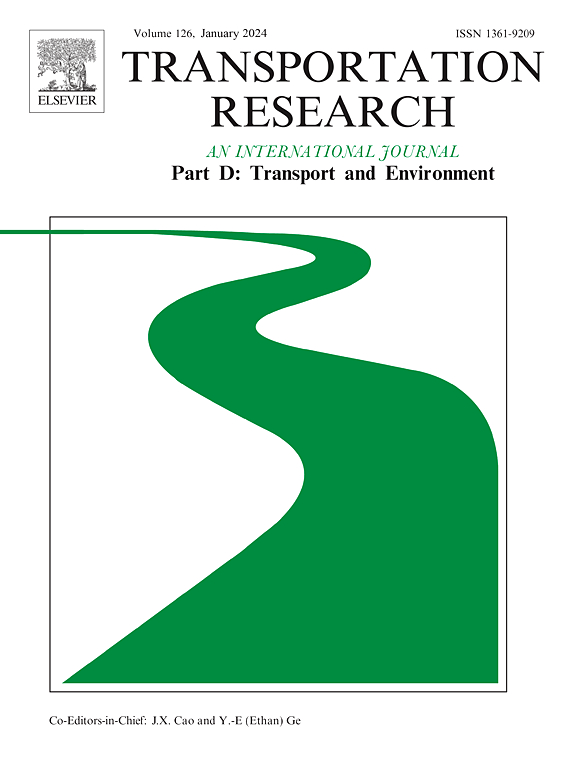电动汽车充电可达性的路途和家庭距离:空间公平性分析
IF 7.7
1区 工程技术
Q1 ENVIRONMENTAL STUDIES
Transportation Research Part D-transport and Environment
Pub Date : 2025-07-10
DOI:10.1016/j.trd.2025.104910
引用次数: 0
摘要
本研究通过综合考虑目的地和途中充电机会的方法,评估了华盛顿市区公共电动汽车充电站的可达性。通过将所有日常出行模式纳入可达性评估,我们的方法提供了比基于目的地的方法更现实的收费机会衡量标准,而基于目的地的方法优先考虑与住宅地点的接近程度。空间自相关分析结果表明,传统的可达性评价往往高估了中心城区基础设施的可用性,而低估了外围通勤区基础设施的可用性,从而可能导致资源错配。通过突出高通道和低通道地区的重要集群,我们的方法确定了基础设施分布的空间不平等,并为需要有针对性干预的地区提供了见解。本研究强调了将日常出行模式纳入城市规划的重要性,以确保电动汽车充电基础设施的公平接入,并提出了其他地区可以采用的框架,以增强可持续交通网络和支持公平的城市发展。本文章由计算机程序翻译,如有差异,请以英文原文为准。
En route and home proximity in EV charging accessibility: a spatial equity analysis
This study evaluates the accessibility of public EV charging stations in the Washington metropolitan area using a comprehensive measure that accounts for both destination-based and en route charging opportunities. By incorporating the full spectrum of daily travel patterns into the accessibility evaluation, our methodology offers a more realistic measure of charging opportunities than destination-based methods that prioritize proximity to residential locations. Results from spatial autocorrelation analysis indicate that conventional accessibility assessments often overestimate the availability of infrastructure in central urban areas and underestimate it in peripheral commuting zones, potentially leading to misallocated resources. By highlighting significant clusters of high-access and low-access areas, our approach identifies spatial inequalities in infrastructure distribution and provides insights into areas requiring targeted interventions. This study underscores the importance of incorporating daily mobility patterns into urban planning to ensure equitable access to EV charging infrastructure and suggests a framework that other regions could adopt to enhance sustainable transportation networks and support equitable urban development.
求助全文
通过发布文献求助,成功后即可免费获取论文全文。
去求助
来源期刊
CiteScore
14.40
自引率
9.20%
发文量
314
审稿时长
39 days
期刊介绍:
Transportation Research Part D: Transport and Environment focuses on original research exploring the environmental impacts of transportation, policy responses to these impacts, and their implications for transportation system design, planning, and management. The journal comprehensively covers the interaction between transportation and the environment, ranging from local effects on specific geographical areas to global implications such as natural resource depletion and atmospheric pollution.
We welcome research papers across all transportation modes, including maritime, air, and land transportation, assessing their environmental impacts broadly. Papers addressing both mobile aspects and transportation infrastructure are considered. The journal prioritizes empirical findings and policy responses of regulatory, planning, technical, or fiscal nature. Articles are policy-driven, accessible, and applicable to readers from diverse disciplines, emphasizing relevance and practicality. We encourage interdisciplinary submissions and welcome contributions from economically developing and advanced countries alike, reflecting our international orientation.

 求助内容:
求助内容: 应助结果提醒方式:
应助结果提醒方式:


